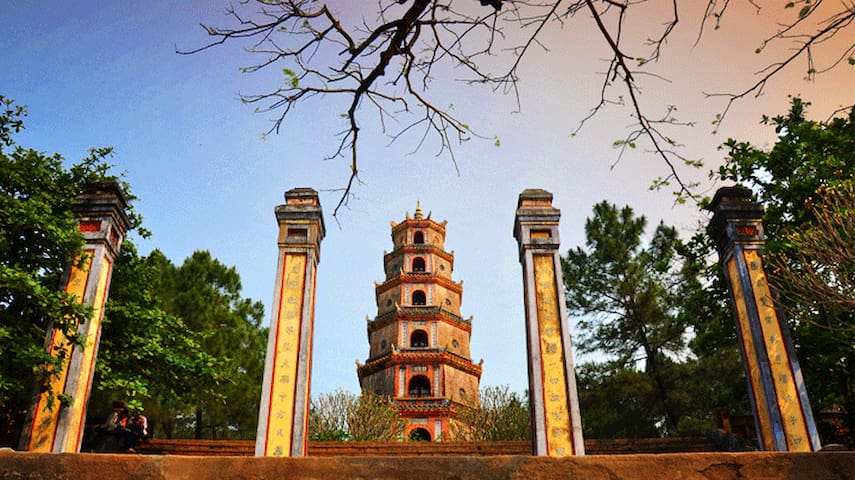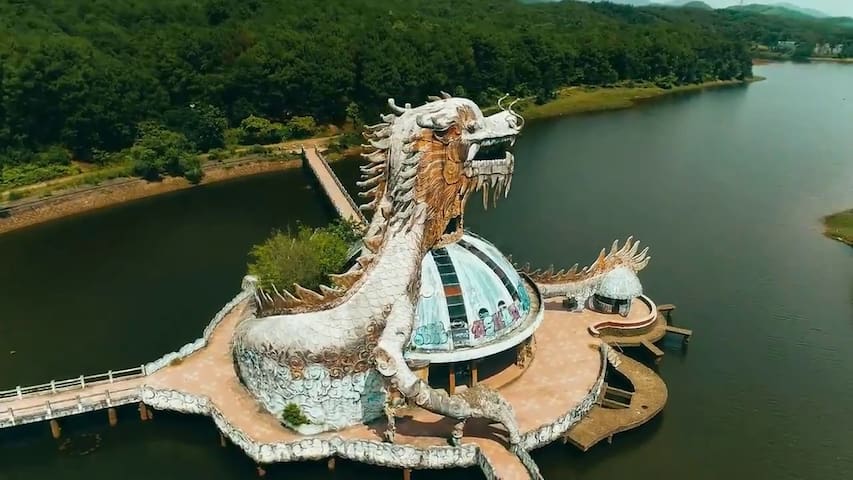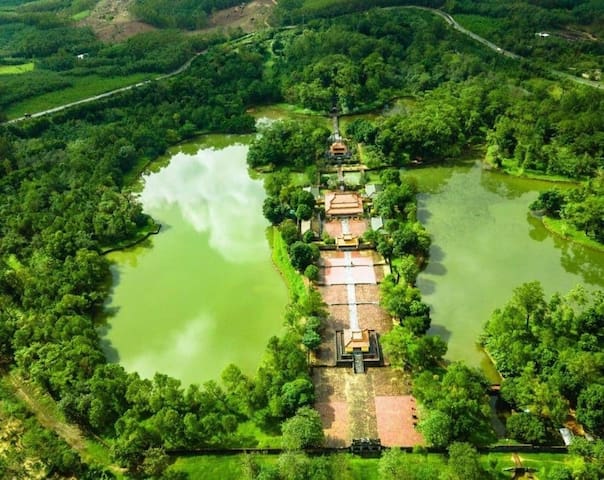Tham quan
The Imperial City of Hue was once an enormous complex full of all the executive and bureaucracy you would expect from a country’s capital. It was enclosed within a square fortress (also known as the Hue Citadel), with each of the four walls about 2 kilometres long and a wide moat on the outside.
All through this city were temples, palaces, offices, gardens, and residences. The most important bit was in the middle.
It was called the Purple Forbidden City and it was where the emperor and his closest confidants lived and worked. Once, it would have been inaccessible to most people. Now, of course, we can all walk through it and see what remains.
73 명의 현지인이 추천하는 곳
황성
The Imperial City of Hue was once an enormous complex full of all the executive and bureaucracy you would expect from a country’s capital. It was enclosed within a square fortress (also known as the Hue Citadel), with each of the four walls about 2 kilometres long and a wide moat on the outside.
All through this city were temples, palaces, offices, gardens, and residences. The most important bit was in the middle.
It was called the Purple Forbidden City and it was where the emperor and his closest confidants lived and worked. Once, it would have been inaccessible to most people. Now, of course, we can all walk through it and see what remains.
Built on a small hill overlooking the Song Huong (Perfume River), 4km southwest of the Citadel, this seven-storey pagoda is an icon of Vietnam and as potent a symbol of Hue as the Citadel.
73 명의 현지인이 추천하는 곳
Thien Mu Pagoda
HuếBuilt on a small hill overlooking the Song Huong (Perfume River), 4km southwest of the Citadel, this seven-storey pagoda is an icon of Vietnam and as potent a symbol of Hue as the Citadel.
If you’re ever in Hue, rent yourself a motorbike, head down south for a few miles through country roads, and you will arrive at this post-apocalyptic dreamworld.
Thuy Tien Lake lies just five miles outside Huong Thuy town in Hue. This abandoned water park hidden in the jungle has now become popular with the odd backpacker who is enamored with the idea of exploring something off the beaten track, and of course, the rumors of crocodiles who once lived there.
Thuy Tien lake Abandoned Water Park
If you’re ever in Hue, rent yourself a motorbike, head down south for a few miles through country roads, and you will arrive at this post-apocalyptic dreamworld.
Thuy Tien Lake lies just five miles outside Huong Thuy town in Hue. This abandoned water park hidden in the jungle has now become popular with the odd backpacker who is enamored with the idea of exploring something off the beaten track, and of course, the rumors of crocodiles who once lived there.
The main building brings about a strong Western feel, however, the landscape was arranged to reflect traditional perceptions: a balanced combination between wood, land, water and plants. Overall, it’s an emerging rectangular structure with 127 steps, leaning against the mountain. The side walls are formed by the biggest sculptures of dragons in all over Vietnam. After climbing upstairs, tourists can first see the house of epitaph. The statues of madarines court (including madarines, horses, soldiers...) are placed at the courtyard.
The tomb is about 7km away from the center of Hue city. Travellers are recommended to get there by motorbike or taxi.
69 명의 현지인이 추천하는 곳
개인왕의 왕릉
Khải Định The main building brings about a strong Western feel, however, the landscape was arranged to reflect traditional perceptions: a balanced combination between wood, land, water and plants. Overall, it’s an emerging rectangular structure with 127 steps, leaning against the mountain. The side walls are formed by the biggest sculptures of dragons in all over Vietnam. After climbing upstairs, tourists can first see the house of epitaph. The statues of madarines court (including madarines, horses, soldiers...) are placed at the courtyard.
The tomb is about 7km away from the center of Hue city. Travellers are recommended to get there by motorbike or taxi.
Minh Mang Tomb is the final resting place of the second emperor of the Nguyen Dynasty. Minh Mang Emperor, whose reign marks the culmination of the Nguyen dynasty power throughout the country.
Located on the Tam Tai Son mountain, Huong Tho commune, Huong Tra district, and away 12 km from Hue city center to the west.
The tomb of Minh Mang is a harmonious blend of picturesque landscape and solemn architecture, which portrays the strictness and deep beliefs of the Emperor.
56 명의 현지인이 추천하는 곳
Minh Mang Tomb
Quốc lộ 49Minh Mang Tomb is the final resting place of the second emperor of the Nguyen Dynasty. Minh Mang Emperor, whose reign marks the culmination of the Nguyen dynasty power throughout the country.
Located on the Tam Tai Son mountain, Huong Tho commune, Huong Tra district, and away 12 km from Hue city center to the west.
The tomb of Minh Mang is a harmonious blend of picturesque landscape and solemn architecture, which portrays the strictness and deep beliefs of the Emperor.
An Dinh Palace Hue or Cung An Dinh lies on the bank of An Cuu Canal, at 179 Phan Dinh Phung street, Hue city, Vietnam. The place where Khai Dinh Emperor lived from a child until becoming the twelfth Emperor of the Nguyen Dynasty as a private residence. Between 1917-1919 Nguyen Phuc Vinh Thuy (later Bao Dai Emperor) had renovated in modern style and became the residence officially.
After Bao Dai abdicated in 1945, he had moved from the Imperial City to the An Dinh Palace and lived with his mother and his wife, and his children.
During the twentieth century, this place became the residence for both Vietnam’s last two queens, Tu Cung and Nam Phuong at different times.
Paris Cafe
An Dinh Palace Hue or Cung An Dinh lies on the bank of An Cuu Canal, at 179 Phan Dinh Phung street, Hue city, Vietnam. The place where Khai Dinh Emperor lived from a child until becoming the twelfth Emperor of the Nguyen Dynasty as a private residence. Between 1917-1919 Nguyen Phuc Vinh Thuy (later Bao Dai Emperor) had renovated in modern style and became the residence officially.
After Bao Dai abdicated in 1945, he had moved from the Imperial City to the An Dinh Palace and lived with his mother and his wife, and his children.
During the twentieth century, this place became the residence for both Vietnam’s last two queens, Tu Cung and Nam Phuong at different times.






